Clade Monocots | Clade Angiosperms Rank Species | |
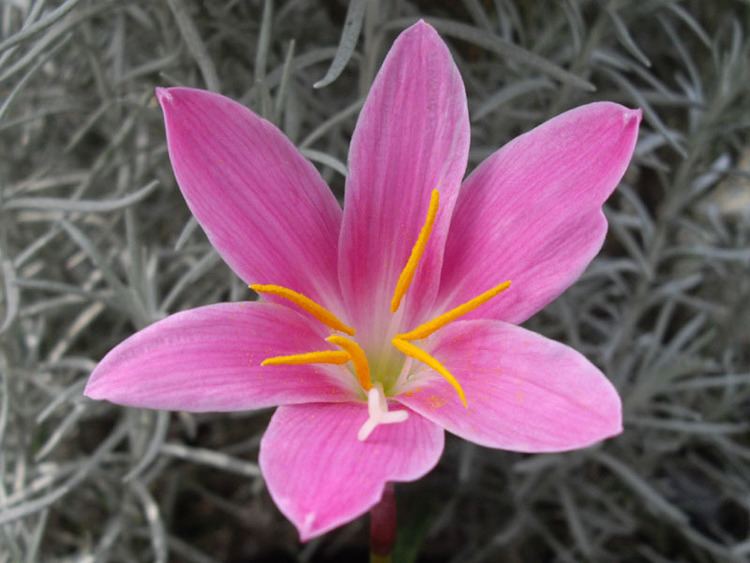 | ||
Similar | ||
Zephyranthes carinata, commonly known as the rosepink zephyr lily or pink rain lily, is a perennial flowering plant native to Mexico, Colombia and Central America. It is also widely cultivated as an ornamental and naturalized in the West Indies, Peru, Argentina, Brazil, the southeastern United States from Texas to Florida, Zimbabwe, South Africa, China, Korea, the Ryukyu Islands, Assam, Nepal, Bhutan, Sri Lanka, Solomon Islands, Queensland, Society Islands, Kiribati, and Caroline Islands.
Contents
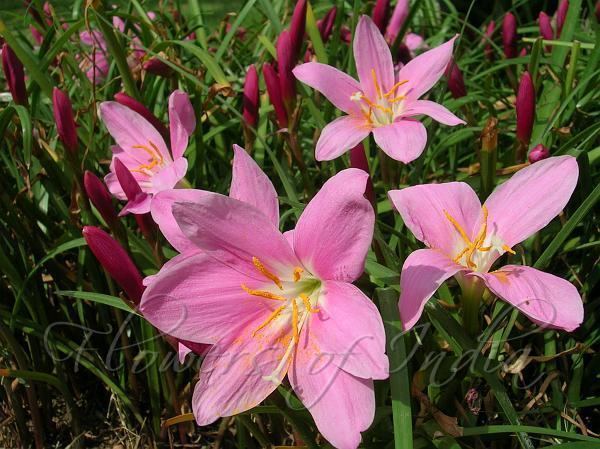
Zephyranthes carinata has large bright pink flowers, around 10 cm (4 in), and green strap-like leaves. They are found naturally in moist, open areas, often near woodlands.
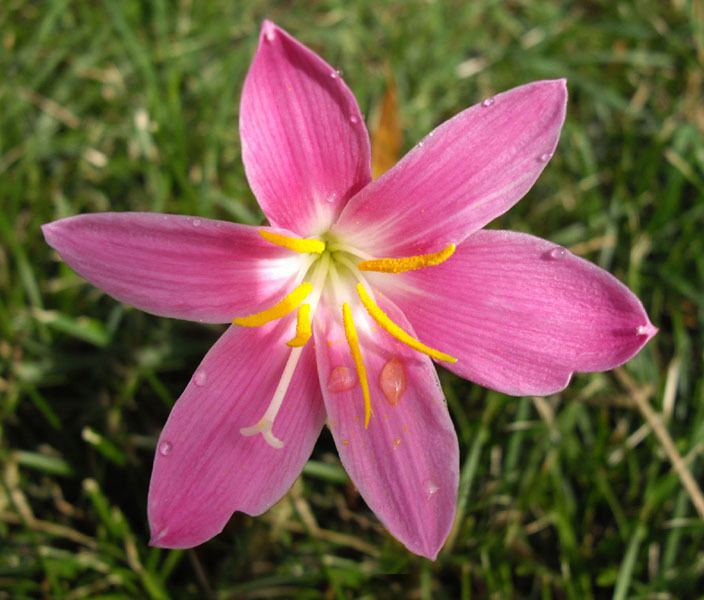
Like other rain lilies, their common name refers to their habit of blooming soon after a heavy rainfall. They are widely grown in gardens as annuals and as container plants, although they will overwinter in warm climates.

Zephyranthes carinata are often incorrectly referred to as Zephyranthes grandiflora, especially in horticulture.
Description
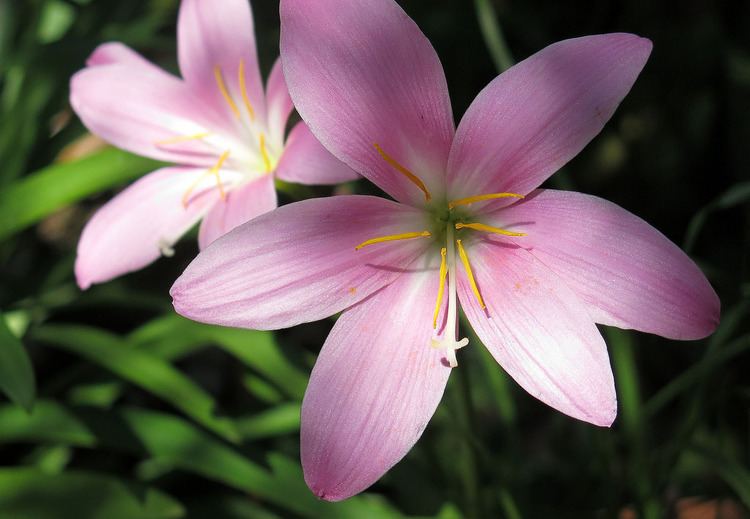
Z. carinata grows from tunicate globular bulbs 2 to 3 cm (0.8 to 1.2 in) in diameter. The tunics are wine-red in color. Four to six linear and flattened leaves are produced by each bulb. Each is 15 to 30 cm (6 to 12 in) long and 6 to 8 mm (0.24 to 0.31 in) wide, reddish at the bases and bright green for the rest of their lengths.

The funnel-shaped flowers are solitary, with pink to rose red perianths. They are borne erect or slightly inclined on scapes 10 to 15 cm (4 to 6 in) long. The deep lilac to purplish spathes are 25 to 30 mm (1.0 to 1.2 in) long. There are two lengths of the stamen filaments - 15 mm (0.6 in) and 21 mm (0.8 in). The anthers are 6 mm (0.24 in) in length. The style is filiform.
The flowers develop into more or less spherical or three-lobed capsules. The seeds are shiny black and flattened.
Classification
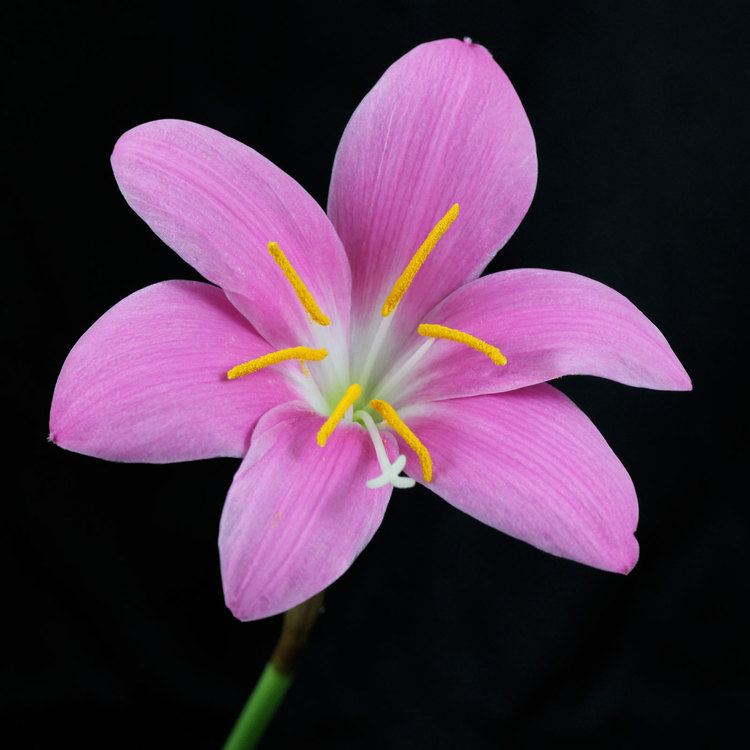
Zephyranthes carinata belongs to the genus Zephyranthes (rain lilies) of the tribe Hippeastreae. It is classified under the subfamily Amaryllidoideae of the Amaryllis family (Amaryllidaceae). In broader classifications, they are sometimes included within the lily family (Liliaceae).
Z. carinata is often referred to as Zephyranthes grandiflora, especially in horticulture. But the former was published earlier, hence Z. grandiflora is considered superfluous and illegitimate. Another name identified as an earlier synonym of Z. carinata is now considered to be a different species - Zephyranthes minuta.
Nomenclature
Z. carinata is also known as the 'rosepink rain lily', 'rosepink magic lily', or 'pink magic lily'. Like other rain lilies, their common name refers to their habit of blooming soon after a heavy rainfall. However, cultivated specimens of Z. carinata can be induced to flower all throughout the year by maintaining humidity.
They are one of the three species of rain lilies commonly known as 'pink rain lilies'. The other two are Zephyranthes rosea and Habranthus robustus. Z. rosea is a much smaller species with pink flowers that have green centers. H. robustus, on the other hand, have generally paler pink and more strongly bent flowers.
Non-English common names of Z. carinata include:
Distribution and habitat
Z. carinata is native to Central America, from Mexico to Colombia. They have been introduced elsewhere and have become widely naturalized. They are usually found in open pastures and hill slopes.
Uses
Z. carinata are widely cultivated as ornamentals. They are able to survive colder temperatures than other species of Zephyranthes.
Toxicity
Like other species of Zephyranthes, Z. carinata contain toxic alkaloids including pretazettine, carinatine, lycorine, galanthamine, and haemanthamine. If ingested, they can cause vomiting, convulsions, and death.
